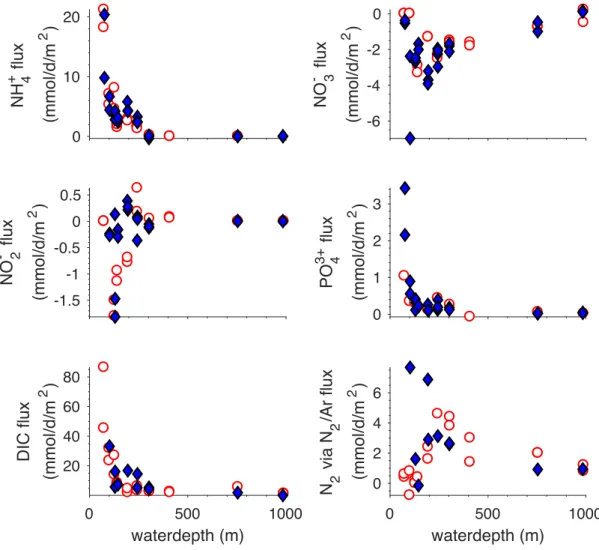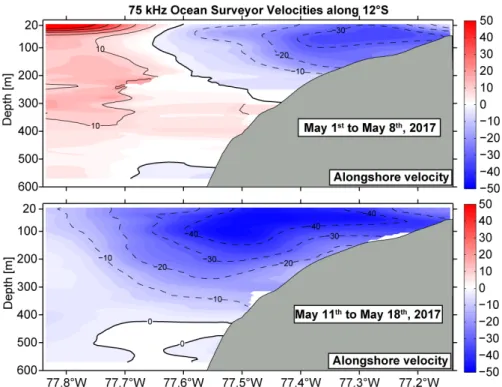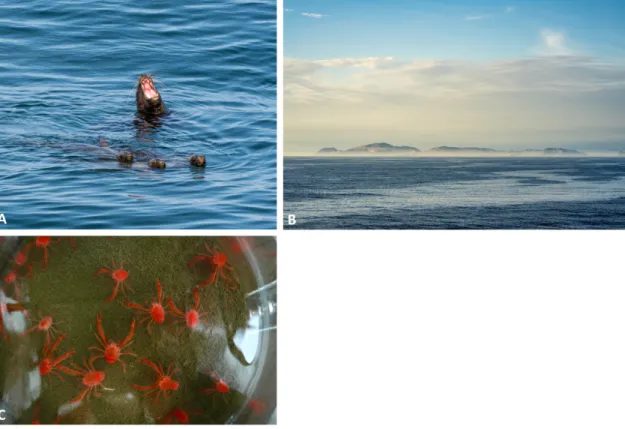Meteor cruise M137, Callao – Callao, 06. – 29. May 2017 3rd Weekly Report, 21. May 2017
Stefan Sommer and the entire M137 Team
During the last week, we finished the in situ natural flux measurements at the seafloor using the BIGO type lander I and II (Biogeochemical Observatory). During these technological demanding measurements, we investigate the uptake of e.g. oxygen and nitrate as well as the release of nutrients such as ammonium and phosphate in benthic flux chambers. These flux measurements were conducted at 10 different sites along the 12° S depth transect. They cover a depth range of 80 to 1000 m, which is characterized by different bottom water redox conditions and diverse benthic communities such as the occurrence of sulphur bacteria, which can affect the solute exchange across the sediment water interface substantially.
The major question is to what extend does the nutrient release from the seafloor impact the entire nutrient budget of the oxygen minimum zone and contribute via positive feedback mechanisms to its presently observed expansion. This transect has been already studied in austral summer during METEOR cruise M92 in 2013. The measurements during this
expedition in austral fall shall contribute to resolve seasonal and inter-annual variability.
On the first sight the benthic fluxes measured during M92 and M136/137 looks similar (Fig.
1). However, please note these data are preliminary and need to be finally processed and interpreted. Remarkable is the very high phosphate flux at the shallow station at 74 m water depth.
The physical oceanographers continued taking CTD/O2 profiles and turbulence profiles using the microstructure probe along the 12°S transect. Additionally, water samples were
collected for nutrient measurements. During this week, the data from the shipboard Ocean Surveyor current profiler indicated a strong increase of the poleward Peruvian Undercurrent in comparison to the end of the previous and the beginning of this cruise (Fig. 2).
Concurrently, the oxygen and nitrate concentrations in the water column above the upper continental slope increased, what might impact benthic biological and biogeochemical processes.
Fig. 1: Preliminary in situ fluxes of various solutes across the sediment water interface. Fluxes measured during cruises M136/137 are depicted as blue diamonds in comparison to those of M92 displayed as open red circles.
We suppose that this strong current is caused by a coastal trapped wave. These waves communicate variability generated at the equator along the continental slope to the
upwelling regions off Peru and Chile and play an important role for the climate phenomena El Niño and La Niña. Even our Glider struggle with the strong current. Presently, they can´t accomplish their actual missions and we redirected them into deeper water to avoid the strong current.
0 10 20
NH 4+ flux (mmol/d/m2 )
-1.5 -1 -0.5 0 0.5
NO 2- flux (mmol/d/m2 )
0 500 1000
waterdepth (m) 20
40 60 80
DIC flux (mmol/d/m2 )
-6 -4 -2 0
NO 3- flux (mmol/d/m2 )
0 1 2 3
PO 43+ flux (mmol/d/m2 )
0 500 1000
waterdepth (m) 0
2 4 6
N 2 via N 2/Ar flux (mmol/d/m2 )
Fig. 2: Alongshore current component along 12°S at the 1. – 8. May (upper panel) and the 11.
– 18. May (lower panel). Negative values indicate southeastern and positive values northwestern currents.
According to the planned cruise schedule we now started to deploy the BIGO Lander for experimental studies at the seafloor to investigate the effect of nitrate availability on the seabed release of ammonium, dinitrogen, phosphate and dissolved iron. We further continue the intense sampling programme with regard to geochemistry as well as the biology of foraminifera and sulphur bacteria.
Often our station work is accompanied and vociferously commented by curious sea lions, Fig. 3A, B. Underwater we also encounter lush life when after a short dive hundreds of the squat lobster Pleuroncodes monodon are captured by the camera system of the BIGO lander just prior to its placement on the seafloor. A latter view into the chamber of the lander (Fig.
3C) reveals high abundances of this organism of up to 322 individuals per m2. With a biomass of up to 3.4 million tons (Gutiérrez et al. 2008), this species represents an important
organism in the Peruvian upwelling ecosystem.
Abb. 3: A,B Curious visitors during our stationwork at the islands Isla San Lorenzo and Isla Callao offshore Callao, (Photos: C. Rohleder). C, P. monodon enclosed in the benthic chamber of the BIGO Lander (Photo: S. Sommer).
At night we continue an intense water sampling programme including water column geochemistry and physics including a trace metal programme using a special CTD water sampler rosette. These measurements are supplemented by the deployment of in situ pumps for radiotracer measurements and investigations to better understand the sulphur cycling in the water column.
Presently, due to a strong low off southern Chile our station work takes place during high swell. Everybody is fine and we are advancing well with our programme, which is also due to the very constructive and friendly cooperation with the entire Meteor team.
With best regards,
Stefan Sommer and the entire M137-Team


